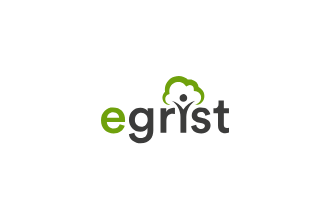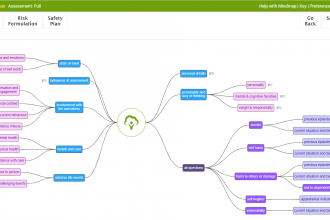Mental Health Decision Support for Everyone
Improve mental health and wellbeing with the Galatean Risk and Safety Technology, GRiST.

Reconnecting you with a caring and supportive network
GRiST is a web-based application that reconnects us within a caring and supportive network using advice from thousands of mental-health experts. The goal is to reduce risks such as suicide and violence, improve wellbeing, and help us live safely in the community.
Access Expertise
Gain access to mental-health expertise 24 hours a day, 7 days a week without specialist training or, indeed, any clinical training at all
Early Detection
GRiST points you to the right questions to ask, providing expert advice based on your answers for early detection of mental-health problems
Tailored Support
Structured mental-health and safety knowledge point people towards those issues of concern that relate to a particular individual’s profile
Ensuring Confidence
With one million encapsulated clinical judgements, GRiST has the power to provide its own accurate clinical evaluations and identify the most appropriate help

See how GRiST will benefit you
GRiST is trusted by thousands of mental-health professionals and carers for assessing and managing problems. Start exploring it with our freely accessible and anonymous demonstration today.
Try GRiSTFeatures
GRiST explicitly models structured clinical judgements of mental-health experts
- based on expertise obtained from multidisciplinary mental-health clinicians
- where rigorous research methods were used for eliciting consensual clinical expertise
- with a clear audit trail demonstrating the evidence base for the risk model
GRiST is a validated model of hierarchical risk expertise which
- links risk data to top-level risks through intervening concepts
- provides a precise formal structure and location for each piece of service-user data
- acts as an index to risk information held in other patient documentation to facilitate its linkage and collation
- has potential to populate information in other patient records and avoid double data entry
- makes it easy to find any piece of information and format it for reports
GRiST integrates empirical evidence with structured clinical judgements
- within a single system
- using the accumulating database of risk data and judgements
- in accordance with Department of Health guidance
GRiST creates opportunities for NHS organisations to collaborate on research projects with the GRiST R&D teambecause it is
- based in two research-intensive universities (Warwick and Aston)
- founded on the philosophy of generating rigorous research evidence for its development coupled with extensive clinical testing at the point of care
GRiST was developed from the start to exploit the semantic web with
- flexible formatting of information
- multiple delivery modes and web-based interfaces
- easy and universal access
- ongoing resources for rapid adaptation in response to changing clinical needs, government directives, and IT requirements
GRiST is designed as an interactive tool with sophisticated interface functionality with
- streamlined data entry with questions displayed only when relevant
- no need to re-enter data that will not change (i.e. persistent/historical data) for subsequent patient assessments (e.g. date of first suicide attempt)
- automatic output of reports from the data entered that can be individually customised for the particular clinical service
- the facility to add comments or narrative to any piece of risk data or to contextualise risk judgments
GRiST is explicitly intended to support shared decision making and self-assessment
- via a service-user version
- as it is accessible via IAPT, primary care, and other front-line services or public facilities such as libraries and mental-health charities
GRiST is based on psychological knowledge structuring and reasoning processes, which enables risk advice to be explained in ways that are
- easy to understand
- easy to validate
- supporting judgements, not blind faith
GRiST is underpinned by a database with statistical and pattern recognition tools. On-going analyses will contribute to the research evidence base about
- how clinicians assess risk
- social patterns and inequalities associated with risk assessment
- risk prediction
GRiST represents a common risk language with multiple interfaces for collecting information and providing advice that
- reflects the needs of different assessors in different contexts
- is all linked to the same underlying model of risk
Latest News
Helping to deliver better risk assessments
Some compelling reasons to use GRiST
Security
Risk data is independent of the patient record, so cannot be linked back to the patient record. All communications are via an encrypted channel
Alerts
Any dangerous issues requiring immediate intervention with a clinician can be triggered by the computer using alerts to phones or emails as appropriate
Reports
Reports provide an intuitive explanation of patients’ risks, presented in a format that is easy to read and assimilate. Areas of risk in a patient’s profile are immediately obvious at first glance
Management
GRiST provides a comprehensive risk formulation framework and integrated safety planning, helping you to design interventions which target the most significant risk factors affecting an individual service user
Mind Maps
Finding a particular question or subset of questions you want to answer is easy. This is facilitated by the ’mind map’ interface for GRiST, where the risk model structure is visible
Visual Feedback
Accruing risk is immediately visible with GRiST. Once answered, all scale questions change colour to reflect their individual contribution to patients’ overall risk
Visualisation
Create graphs of changing risk status over time, both at the level of overall risks e.g. risk of suicide, and individual risk factors e.g. anxiety to provide new insights into behaviour and optimal support plans
Audit Trails
GRiST has the capacity to facilitate audit trails of risk for individuals, services and organisations. View past assessments and diaries of comments and graphs of how risks have changed over time



